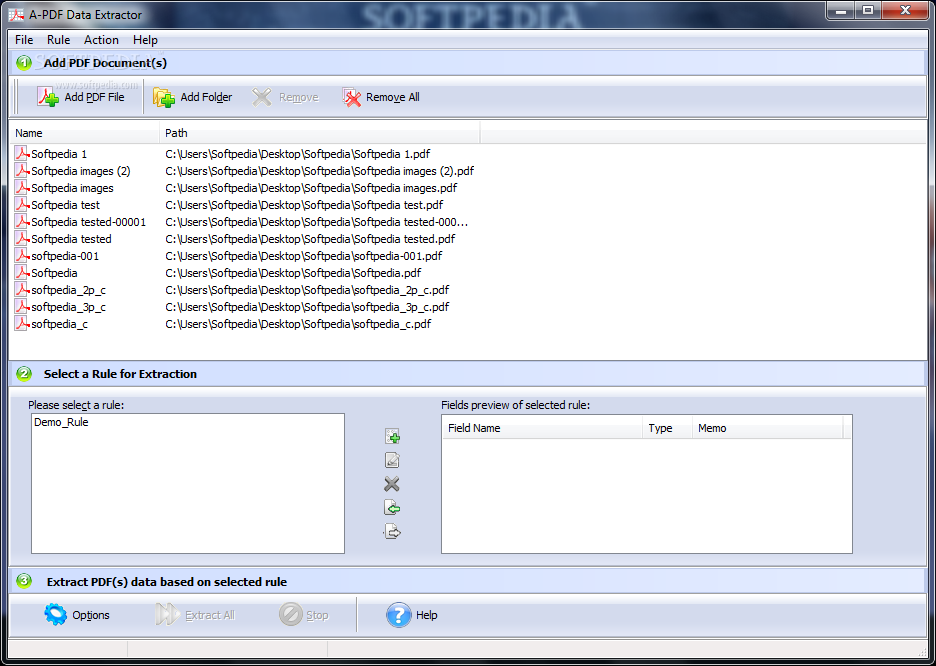

list_strings = *\)", "", x) for x in list_strings] df = pd.DataFrame(list_strings) df.to_excel("output.A PDF extraction software can help you convert unstructured data in PDF files to clean, structured data that can be stored in a data warehouse for reporting and business intelligence.

That can be done easily with a list comprehension and some regex. In this case, all I needed to do was remove the preceding brackets. Extracting the data from a list of stringsĮxtracting the text is easy.
#PDF DATA EXTRACTOR CODE#
But once you write the code to extract it from one document it will be the same for all of your documents as long as they’re homogeneous.

If yours don’t then you’ll have to use regex and look for the constants in your specific document. txt files output like this from PDFs, but the majority do. We can now simply transfer it to a pandas dataframe, do some manipulation and then output it to whatever format we want. As long as you use the same PDF, the structure of this list will stay constant. You will now have a list of all inputs/answers to your questions. In my example, there were only 5 different types of questions I wanted to include so used the following list comprehension to remove everything else. Occasionally, however, there will be random sections or sentences that will begin with brackets so you can use set(sentences) to double-check. Other examples include “radiobuttons” and “combobuttons”, the majority of your PDF inputs will be of these four types. For example, a text section would be (text)James AsherĪnd a checkbox would be (checkbox)unchecked What’s inside these brackets defines the type of input. All inputs, as well as starting on a new line, also start with a pair of brackets. Luckily, there is also another defining factor to help us isolate inputs. import os os.chdir(r"path/to/your/file/here") f = open(r"filename.txt", "r") f = f.read() sentences = f.splitlines()Īs promised this will give you a list of strings.īut, as mentioned, it’s only the user inputs we are interested in here. This will provide a list of strings, with a new instance starting every time there was a newline character (\n) in the original string. txt file into Python with open() and read(), and then use splitlines() on it. And as we know, if there is a constant factor surrounding all things we are trying to extract that makes our lives a lot easier. txt files, all of our all input sections begin on a new line.

We only want the answers and care little for the text surrounding them. The trick is to look for constants in the text and isolate them.Įither way, there’s a solution. I’m not sure if there is a technical reason for this or if it’s simply to make doing something like this more difficult. Sometimes the text surrounding a question can be above the response box, and sometimes it can be below. txt files, outputs can come out a bit funny. txt files, all you have to do is write some code that pulls out the answers that you want. Code written by Author - can be downloaded here: Convert to.


 0 kommentar(er)
0 kommentar(er)
